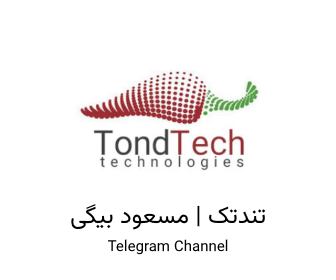Quantum Entanglement in Non-local Games, Graph Parameters and Zero-error Information Theory [PhD Thesis]
4.0
Reviews from our users

You Can Ask your questions from this book's AI after Login
Each download or ask from book AI costs 2 points. To earn more free points, please visit the Points Guide Page and complete some valuable actions.Introduction
Quantum physics is a field that has captivated scientists, mathematicians, and philosophers alike. At its very core lie phenomena that challenge our classical understanding of physics, among which quantum entanglement stands out as one of the most astonishing. Quantum Entanglement in Non-local Games, Graph Parameters and Zero-error Information Theory delves deeply into the fascinating interplay between quantum mechanics, combinatorial mathematics, and information theory. This work serves as a significant contribution to our understanding of how quantum phenomena impact computational and communication tasks in groundbreaking ways.
In a world where classical resources dominate most communication and computational frameworks, quantum resources reveal a startling potential to achieve tasks that would be impossible or inefficient otherwise. Using tools from non-local games, graph theory, and zero-error communication paradigms, this book explores the boundaries of what is achievable when quantum systems are enlisted to aid in problem-solving. The insight gained here has far-reaching implications, not only for theoretical research but also for practical advancements in quantum computing and information science.
Detailed Summary of the Book
This book examines how quantum entanglement contributes to key applications in non-local games, graph theory, and information theory. Non-local games serve as a testing ground for probing the capabilities of quantum systems. These are cooperative, two-player games that depend on sharing quantum entanglement to outperform strategies that rely solely on classical correlations. The thesis investigates several celebrated non-local games, such as the CHSH game, extending their implications into new territories within physics and computation.
Graph theory emerges as a surprisingly effective lens for understanding the connection between quantum mechanics and combinatorial structures. This book focuses on graph parameters like chromatic numbers and independence numbers, exploring how quantum systems redefine these parameters. Quantum-assisted solutions often allow players to achieve objectives that are unattainable using only classical strategies.
Finally, the book applies insights from quantum mechanics to zero-error information theory—where the aim is to design communication systems that are not only efficient but completely error-free. By incorporating entanglement into zero-error settings, you uncover entirely new channels of information transmission with better performance than their classical counterparts.
The fusion of these domains—non-local games, graph theory, and zero-error communication—reveals a unified framework for understanding quantum advantages across various applications. As such, the book bridges multiple disciplines and seeks to answer fundamental questions about the limits of classical and quantum capabilities in computation and communication.
Key Takeaways
- Quantum entanglement allows players in non-local games to outperform classical parties by leveraging correlations that defy classical intuitions.
- Graph parameters such as chromatic numbers and independence numbers can take different values when quantum resources are introduced, offering new approaches to longstanding problems in graph theory.
- Zero-error communication theories benefit immensely from quantum entanglement, enabling entirely error-free communication with increased efficiency.
- The interplay between quantum mechanics and combinatorics suggests broader implications for optimization problems, cryptography, and even artificial intelligence.
- The research presented in this book outlines foundational principles for future studies in quantum computing and quantum information theory.
Famous Quotes from the Book
"The power of entanglement lies not in what it tells us about individual systems, but in what it reveals about correlations that stretch across the quantum realm."
"Non-local games offer us a window into the quantum universe, highlighting strengths and subtleties that often evade classical paradigms."
"In a quantum world, mathematical structures like graphs take on richer and more nuanced interpretations, challenging centuries-old notions in combinatorics and topology."
Why This Book Matters
This book is not merely a collection of results but a bridge between disciplines that were previously considered disparate. By combining insights from quantum mechanics, graph theory, and information science, it paves the way for groundbreaking applications in computing, cryptography, and communication.
The theoretical implications are immense, challenging our classical understanding of mathematical and physical systems. More importantly, these ideas have a clear trajectory toward practical innovation. Quantum computing is moving from theoretical physics laboratories into real-world applications, and the ideas presented in this book will undoubtedly serve as a cornerstone in this transition. Understanding the role of entanglement in non-local games, graph-theoretic problems, and zero-error communication allows us to design better, more efficient systems that harness the extraordinary power of quantum mechanics.
Anyone interested in the intersection of mathematics, physics, and computer science will find this book to be a profound and enriching resource. It highlights the beauty of quantum mechanics applied to theoretical problems while keeping an eye on the transformative possibilities that come with real-world implementation.
Free Direct Download
Get Free Access to Download this and other Thousands of Books (Join Now)
For read this book you need PDF Reader Software like Foxit Reader
![Quantum Entanglement in Non-local Games, Graph Parameters and Zero-error Information Theory [PhD Thesis]](https://s3.refhub.ir/images/thumb/Quantum_Entanglement_in_Non-local_Games__Grap_32520.webp)

